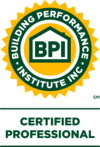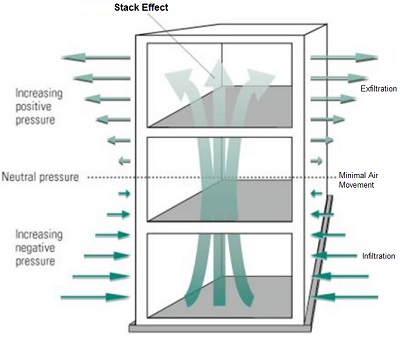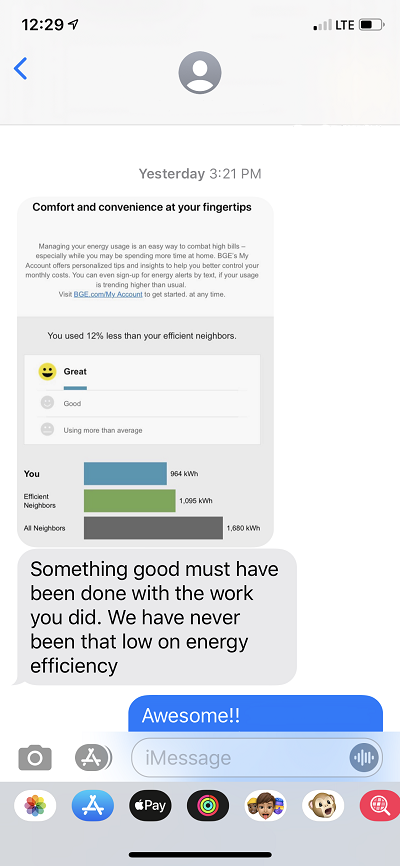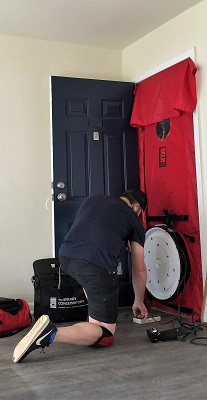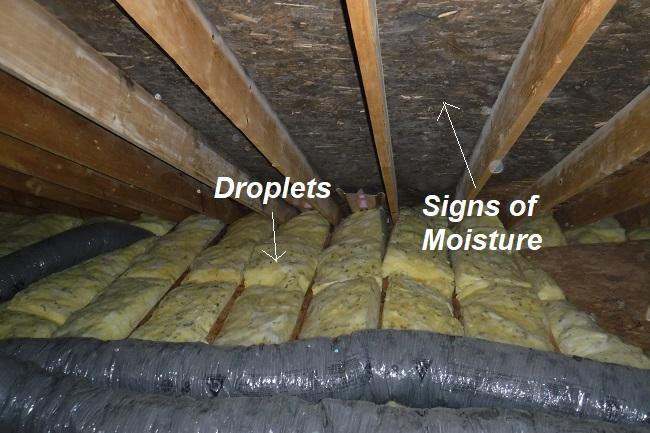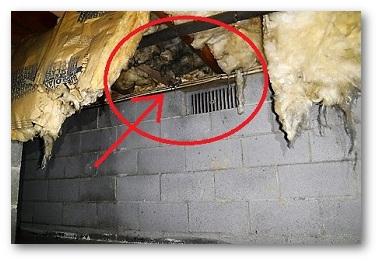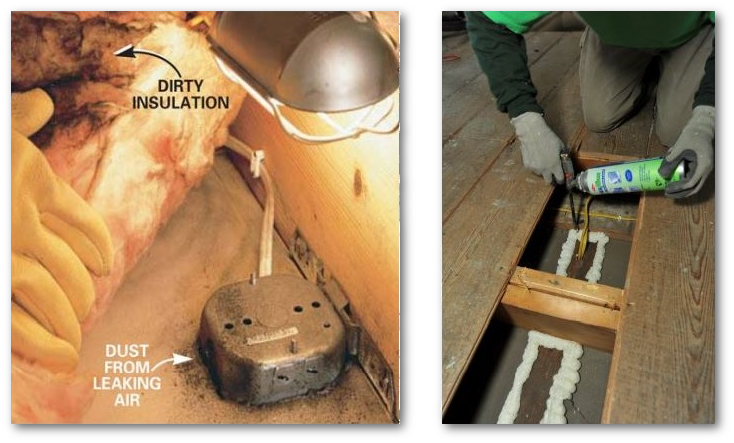Why does Mold Form on Plywood?
Typically, condensation in the attic starts due to a moisture issue created by introducing two completely different air masses. Here are the two possible reasons this problem is happening in your attic.
1. No air sealing at the attic floor to stop warm, conditioned air from escaping into the attic (warm air/ winter issue) coupled with a lack of adequate attic ventilation creating conditions that are right for condensation that adheres to the plywood and eventually forms mold.
2. In summer, a leaking AC HVAC duct in an attic and other HVAC-related inefficiencies can allow air to seep out and interact with the hot, humid attic air, mainly if the attic is not well vented.

If you find this helpful, check out more info on my YouTube Channel @hometrustremodeling
Warm Air Exfiltration - Winter Issue
Signs that you have an attic moisture issue problem during cold months can sometimes be seen on the plywood.
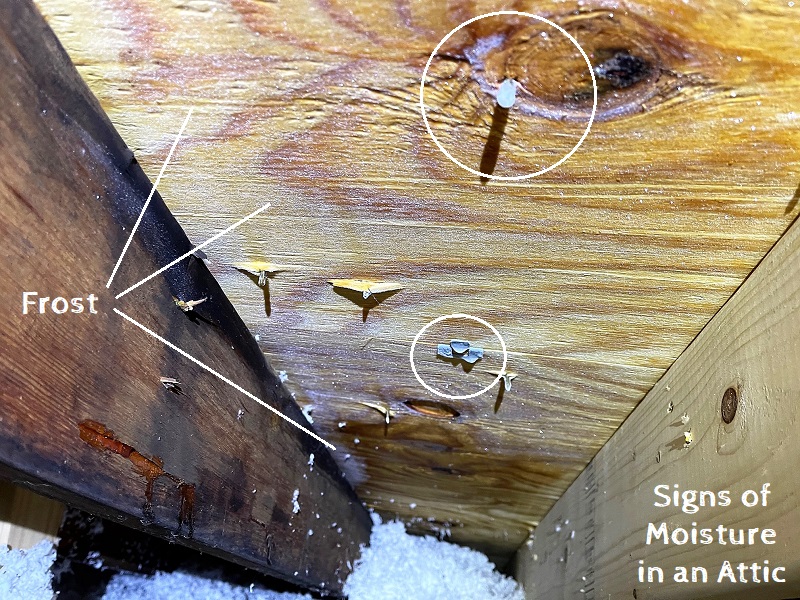
Winter Problems - What to Look out For
Frozen droplets on the tips of nails and hurricane clips signify that warm, humid air is migrating from inside the home into the attic and settling in the wrong places.
Poor ventilation is trapping the air rather than allowing it to organically or mechanically be exhausted (through a ridge vent or attic fan).
But, how is the warm, humid air getting into this attic? The usual suspects...can lights and top plates!
Recessed light thermography taken at the attic floor reveals heat from inside the home escaping into the attic.
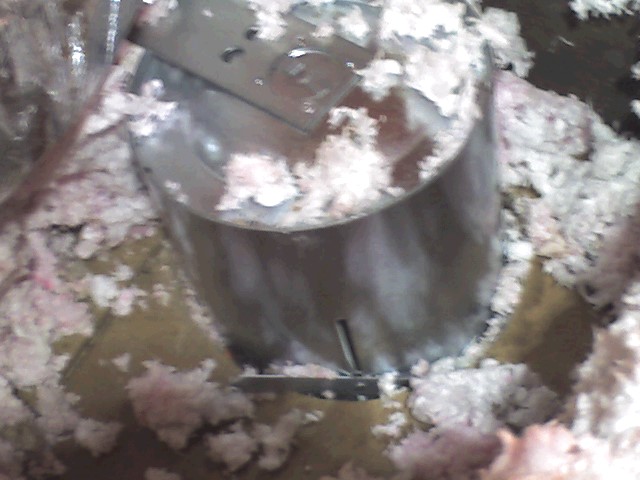
This is a close-up image taken of a recessed light. I took it from the attic during cold weather.
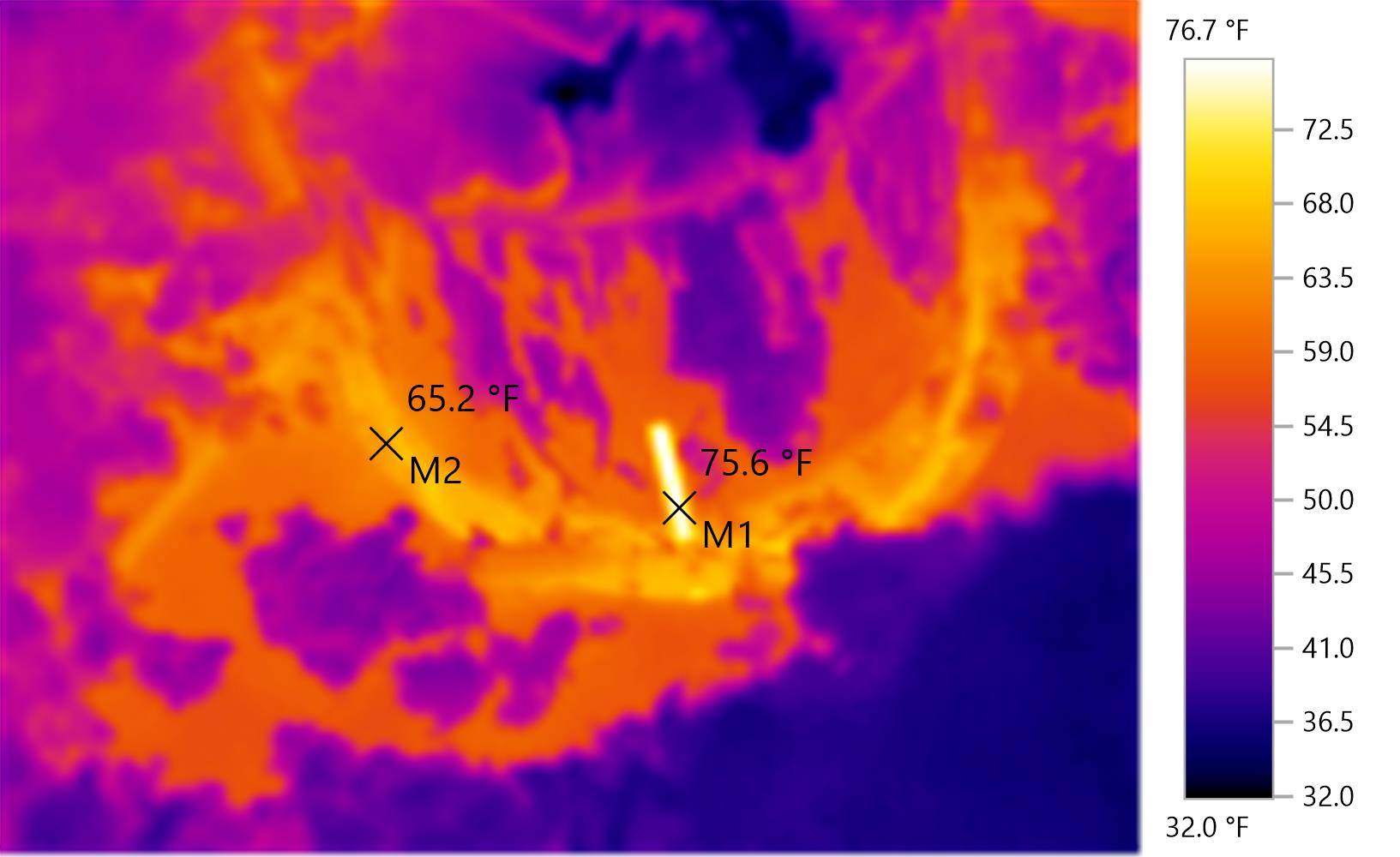
This is the same recessed light. I took a thermal image of the recessed light.
Top plates are also leaky spots if not appropriately air-sealed. Top plates in the attic will exist above the hallway, between rooms, and other areas separated by a wall.
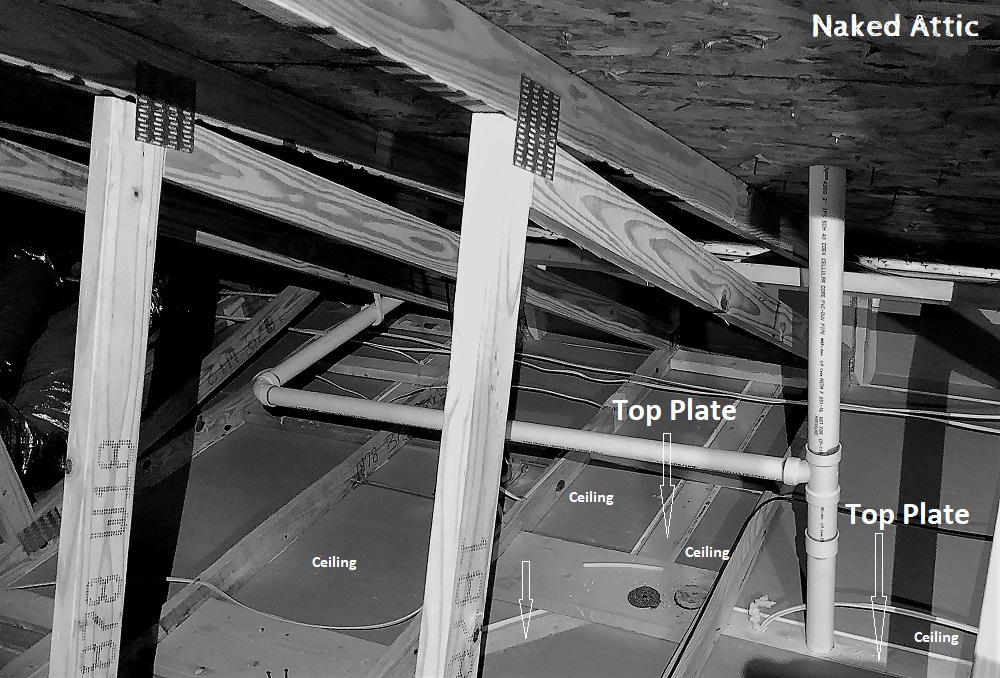

Close-up of a top plate.
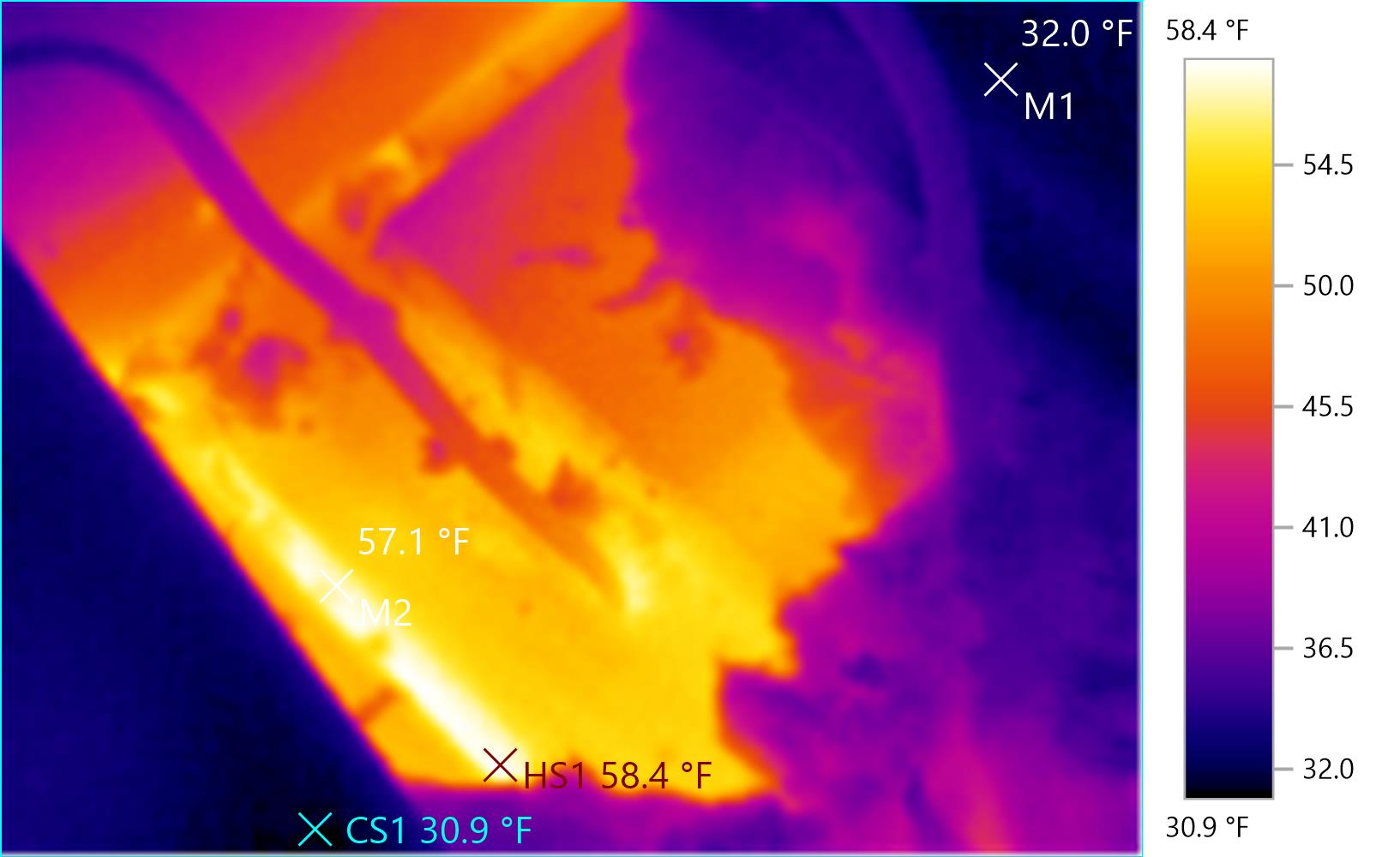
Thermal image of top plate close up.
Summer Condensation - How it Formed in This Attic

This example is one I came across during the attic inspection at a home energy audit.
At first, when I got up in the attic, I could see the stains. It was apparent quickly that there was an issue beyond what I usually see.
I have been in many attics and seen a lot of roof sheathing over the years. I was not exactly sure about this one at first. I have not had a mold case. Overall, is is pretty rare, at least in Maryland.
At first, I considered the possible interaction of the cool conditioned air in the living space below and the warm, humid attic air. Maybe I could find a large opening or bypass where the air interacted, but why would be so high up? Then I turned around.
I saw a huge HVAC supply duct lying completely undressed and the picture was getting clearer.
Summer Moisture - 4 Things to Lookout For
Here is the recipe for mildew and mold growth on the plywood in warmer months:
1. HVAC Ducts
*Second HVAC system located in the attic or crawl space.
*The connected ductwork is also in the attic or crawl space.
*The ducts are leaky and improperly insulated, allowing cold air to escape.
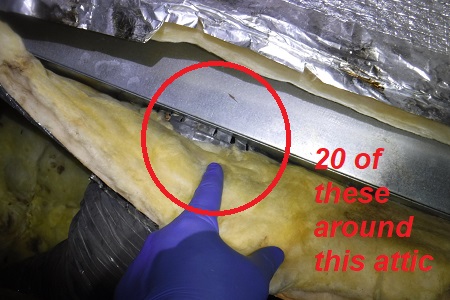
2. HVAC System Size
*The second HVAC system is improperly sized.
*Too large for the space/square footage it is servicing.
*The larger blower pushes cooler air through leaky ducts and into the attic.
3. Poor thermostat location.
*The thermostat is located in an area reported to be a "hot spot" on the floor so the machine was running longer.
4. Poor Ventilation
*Improper baffle placement.
*Blocked eaves (air intake).
*No ridge vent.
*Inoperable attic fan.

A baffle is supposed to act as a channel for the open soffit intake below.
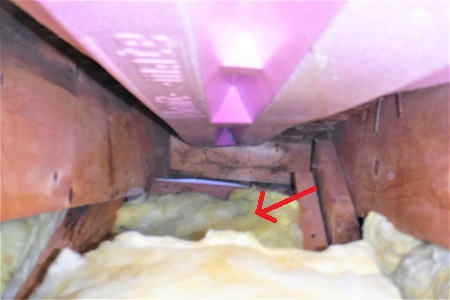
The soffit opening is covered with insulation, not allowing good flow.

Here is what it is supposed to look like.
How to Remove Mold from Attic Plywood
Answer: Control the humidity and the mold growth disappears.
Here are the steps recommended to solve this issue in the long term.
1. Remove the insulation around the soffit/eave areas - the entire perimeter
2. Reinstall baffles at the eaves to promote the best possible organic attic ventilation.
3. Re-position the insulation so as not to cover the openings.
4. Seal the duct seams and tightly insulate the supply plenum (central AC duct) to eliminate leakage (lost energy) into the attic.
________________
Written by Eric Gans
I have over 2000 energy audits under my belt in Maryland. I like to take my personal experiences with each of my audit customers and try to get the things that concern them out into the world so others can make sound home improvement decisions - in the correct order - according to their needs.
Do you have something going on around the house? Maybe my YouTube Channel can help.
YouTube Channel @hometrustremodeling

I would like to hear your comments about this article. Feel free to post something below...





